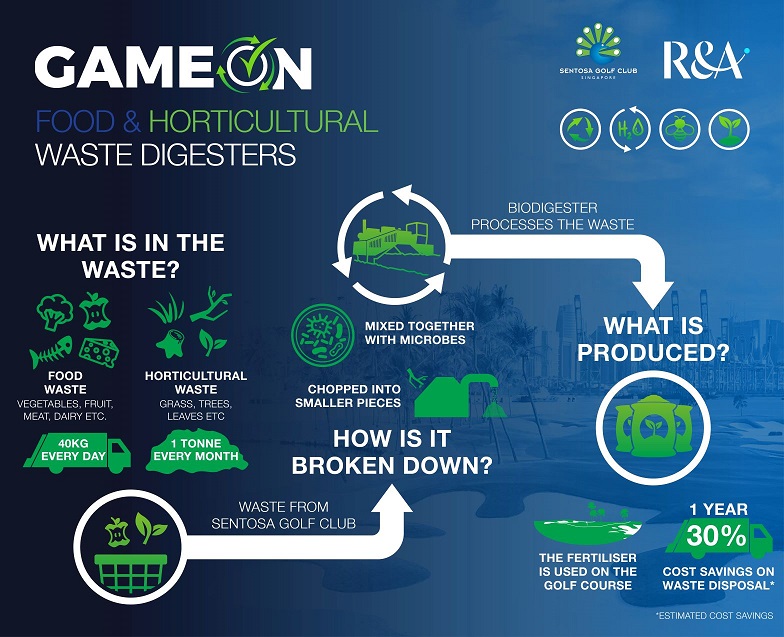Have you heard that Asia produces over 50% of global food waste? China, South Korea, and Japan are being responsible for 28% of disposed food.
At the same time in Singapore, I can see continuous improvement in disposed food waste since 2013. In 2019, it was “only” 607 000 tonnes (in 2013 it was 696K tonnes).
The food waste recycling rate was 18% (source: National Environment Agency) in 2019. This is the highest rate in the last decade.
According to the NEA in Singapore, disposed food is the second-largest waste stream for incineration in the city.
Across the more than one million households in Singapore, about SGD$342 million dollars worth of food is wasted and thrown away each year.

In light of the above-mentioned insights, we can be really happy to learn more about the Sentosa Golf Club‘s initiative.
Sentosa Golf Club is set to install two digesters that will make it the first club in Asia with the ability to grind down food and horticultural waste to reuse as fertilizer on the golf course.
Using a Golf Sustainability Fund Grant awarded by The R&A, the Singapore-based club set on Sentosa Island will reuse 40kg of food waste generated each day along with the one tonne of horticultural waste produced every month.
The grant is part of a project that will also help bring sustainable organic waste management practices to golf courses in Asia with Sentosa Golf Club estimating cost savings of up to 30% on monthly waste disposal over a one-year period.

Embarking on a two-stage process, the first will see Sentosa using a food waste bio-digester to process and grind down waste from its three F&B outlets on site.
Once microbes are added to the waste it is ready for use as organic fertilizer on the golf courses, SMBC Singapore Open venue, The Serapong, and The New Tanjong.
The second stage of the project will introduce a heavy-duty woodchipper and bio-digester shredder to grind an estimated one tonne of horticulture waste that is generated per month at the club.
The club does not currently purchase and apply compost material on the golf course but foresees that a suitable compost by-product can be derived from this project and used to improve the golf course, including
- the retention of vital moisture across the fairways, thereby reducing the need for irrigation.
